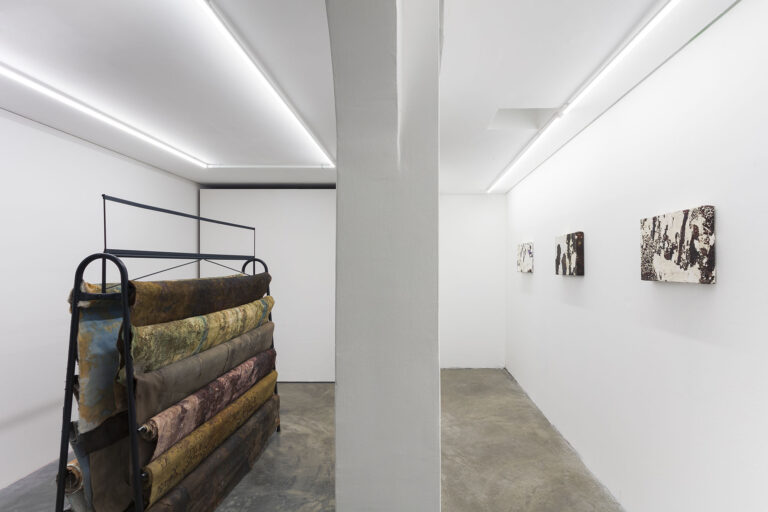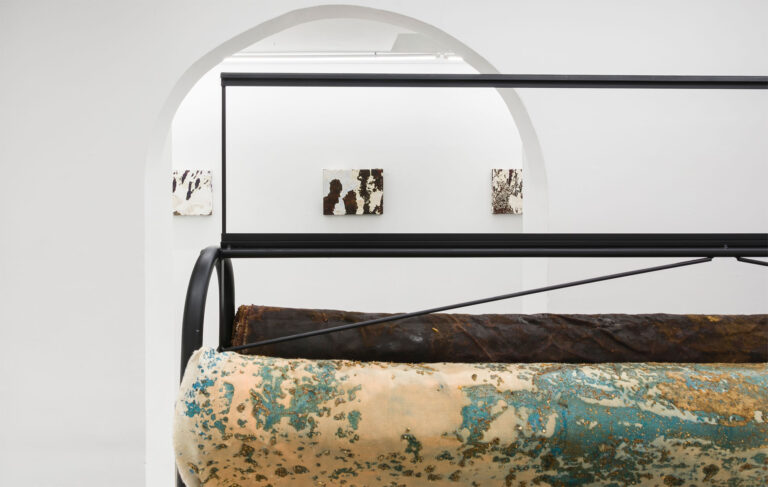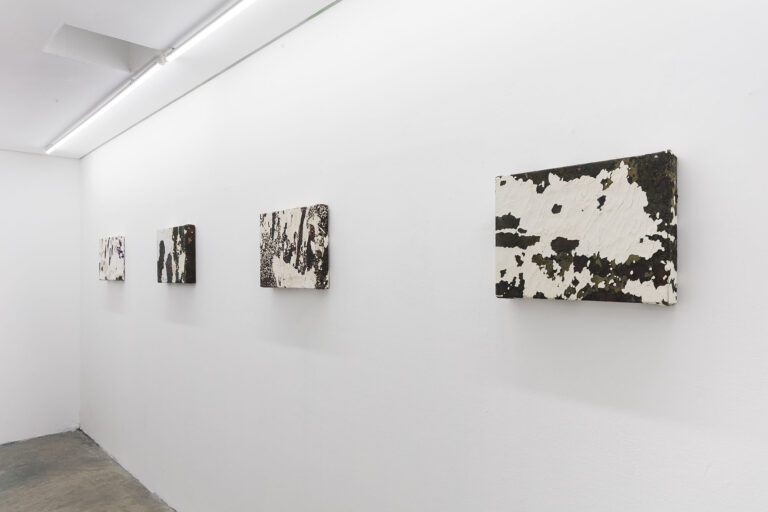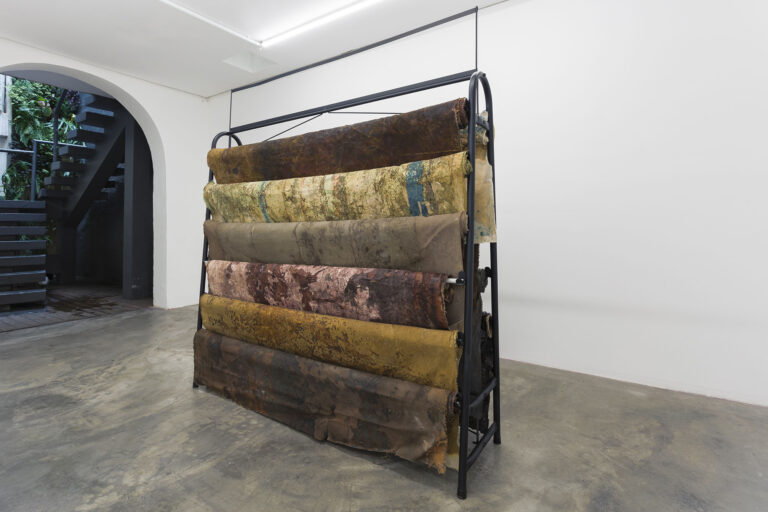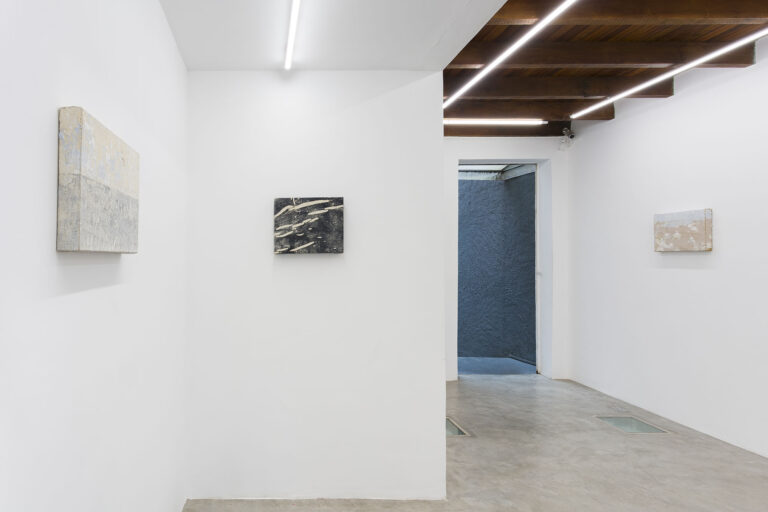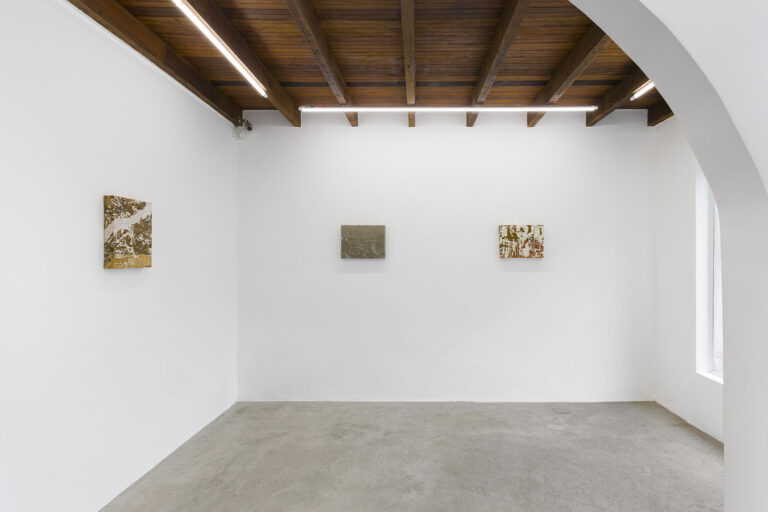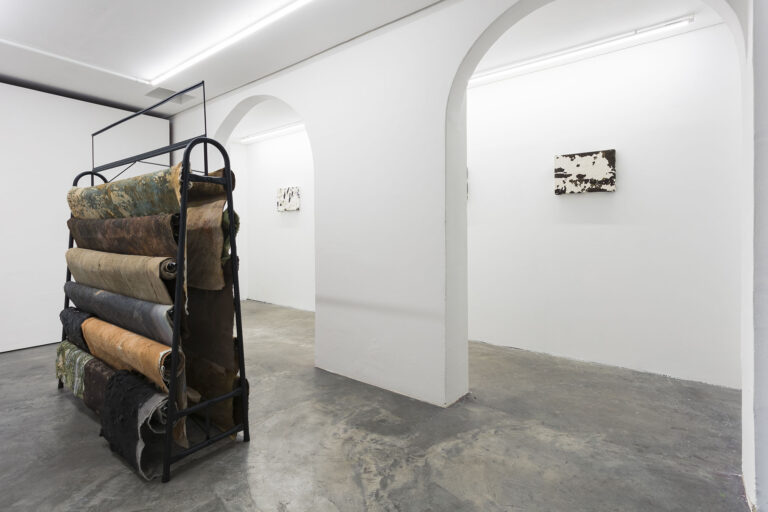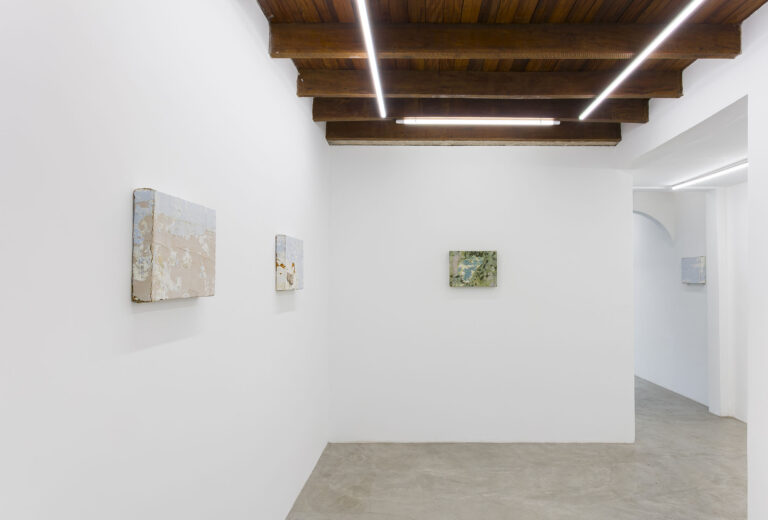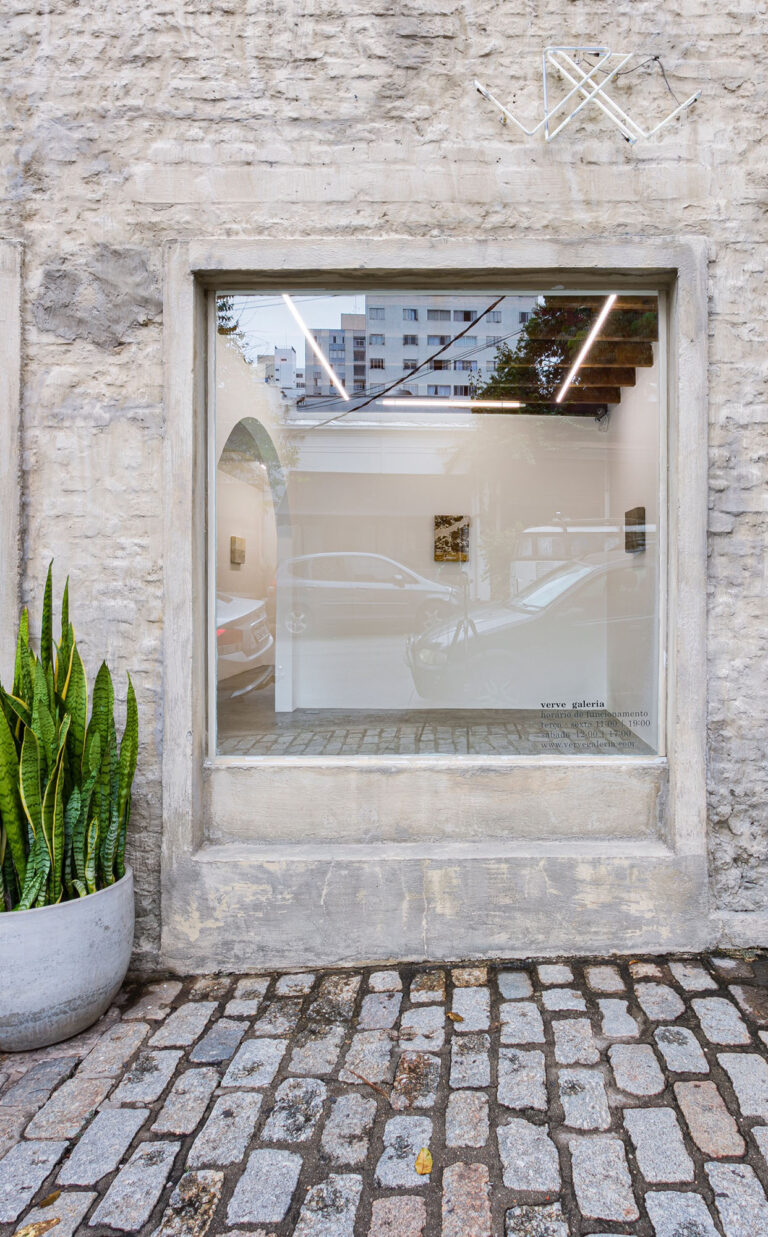Sentiment of the world [Sentimento do mundo]
The meaning of Dudu Garcia’s painting is circular. His destiny, like that of all painting, is the wall. But in the specific case of his paintings, this idea seems even more pertinent.
From this point of view, then, we could think of the history of painting as the history of the wall: from prehistoric caves, in which the pictorial intervention was integrated into the nature of stone, from the walls of temples and palaces in Egypt, Babylon, Crete, Pompeii, Mexico, Cuzco, etc. covered with images, until the invention of the painting, which freed from the building could now be moved to any other wall.
The history of painting could also be thought of from the point of view of the different systems of spatial organization, whether through design, color or social and religious hierarchies. The perspective and shaded space of classical art, the planar tenor of modern painting, were powerful systems to guide and inform artistic production for generations.
But the contemporary painter no longer counts on these collective spatial systems that previously informed and gave meaning to the set of paintings of a specific period. The main challenge for those who want to paint has become, therefore, the invention of their own system (albeit referenced by works by other artists) that can give meaning to their work and make it go beyond common sense repertoires such as: the painting it would be an empty surface to be filled by the artist’s talent, sensitivity and technical skill. His artistic expression brings to the surface an inner world, always given, as if reason and intelligence were not as necessary to creation as sensitivity.
Dudu Garcia managed to produce a system based on the experimentation of the poetic possibilities of a painting that extracts its basic spatial order from the marks of time and men, left on walls and other real surfaces. The beautiful result obtained does not, however, result from decorative impulses, since it is the result of concept and chance. Dudu exposes what the painting (understood as a moving window in the Renaissance) used to cover (wall). In place of the window, parts and fragments of walls. His paintings are situated, as we have seen, between two fundamental surfaces for the history of painting – wall and painting, surfaces par excellence of the pictorial exercise, which here are incessantly and circularly referred to in these works by Dudu Garcia, underlining a real, inescapable tension of any and all screens.

